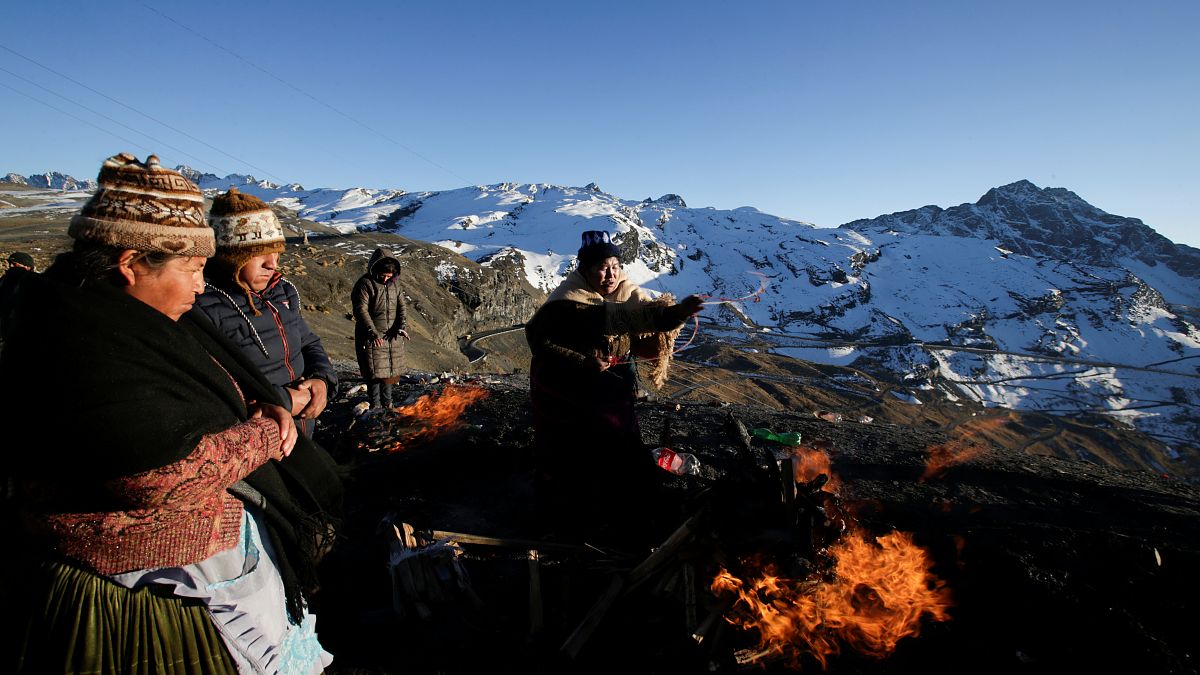A new study found that indigenous-managed lands had high levels of biodiversity.
Including indigenous and local knowledge in agricultural practices can help to address climate change, food security, and wildlife decline, the Intergovernmental Panel on Climate Change (IPCC) said on Thursday in a report on the relationship between land and climate change.
Indigenous Peoples and local communities from 42 countries responded: “Finally, the world’s top scientists recognize what we have always known.”
The communities said they play a fundamental role in protecting the world's lands and forests and that they should be made "partners in climate protection efforts".
A new study from the University of British Columbia also backs that up, suggesting that Indigenous-managed lands may play a critical role in helping species survive.
Amid an alarming loss of wildlife denounced a few months ago by a UN biodiversity panel, researchers at the Canadian university studied land management by indigenous peoples in Canada, Brazil and Australia.
They concluded that indigenous peoples are much better at sustainable land management and that the land they manage has more biodiversity.
The study focused on more than 15,000 geographic areas in three of the world's biggest countries and concluded that areas managed or co-managed by indigenous peoples have a much higher rate of birds, mammals, amphibians and reptiles.
Protected lands like parks and wildlife reserves came second for greatest biodiversity. Indigenous-managed lands had equal or higher levels of wildlife than those protected areas.
"This suggests that it's the land-management practices of many Indigenous communities that are keeping species numbers high," says lead author Richard Schuster of Carleton University, who conducted the research while at the University of British Columbia. "Going forward, collaborating with Indigenous land stewards will likely be essential in ensuring that species survive and thrive," he said.
First study of its kind and on this scale
The authors point out that the study has been conducted in countries with very different climates and species "to see if the pattern held true across these different regions — and it did" says study co-author Ryan Germain.
"From frogs and songbirds right up to large mammals like grizzly bears, jaguars and kangaroos, biodiversity was richest in Indigenous-managed lands.”
This is the first study to compare biodiversity and land management over such a wide geographical area, according to the authors.
They stress that the practice of expelling indigenous peoples from protected National Reserves and Natural Parks harms indigenous peoples and is not necessarily better at achieving the goal of preserving biodiversity.
"Protected areas are a cornerstone of biodiversity conservation globally, but current levels of protection will be insufficient to halt the planetary extinction crisis," says Peter Arcese, the study's senior author.
"Indigenous-managed lands represent an important repository of biodiversity in three of the largest countries on Earth, and Indigenous peoples currently manage or have tenure to roughly one-quarter of the planet's land area," said co-author Nick Reo, a member of the Sault Tribe of Chippewa Indians tribe of Ontario and associate professor at Dartmouth College.
"In light of this, collaborating with Indigenous governments, communities and organisations can help to conserve biodiversity as well as support Indigenous rights to land, sustainable resource use and well-being," he concludes.
The NGO Survival International states that 80% of the world's most biodiverse areas are home to indigenous peoples and they denounce the expulsion practices of conservation organisations.
Common sense and care for nature
Indigenous peoples often have a close relationship with the environment in which they live.
Many indigenous peoples and local communities "cannot imagine their lives divorced from nature, and their interest in the sustainable use of resources is strong," says Eva Müller, Director of the Forest Policy and Resources Division of the Food and Agriculture Organisation of the United Nations.
A report by the World Resources Institute said in 2016 for that protecting indigenous lands was an inexpensive solution to limit the advance of climate change.
The authors of the University of British Columbia study invite governments and authorities to partner with indigenous communities as a possible way to achieve the environmental goals of international treaties.
"Partnerships with Indigenous communities that seek to maintain or enhance Indigenous land tenure practices on Indigenous-managed lands may, therefore, have some potential to ameliorate national and global shortfalls in land protection for biodiversity conservation using a mix of conventional protected areas and Indigenous-managed lands," the authors write in the abstract.
This is supported by the IPCC report which called on world authorities to create more sustainable methods of using land including by empowering indigenous communities.
Read more about the new IPCC report on land and climate here.
